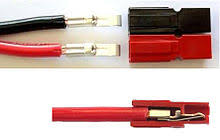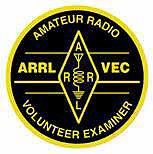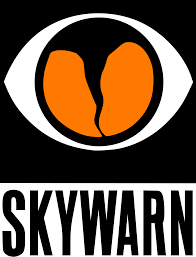Setting up ad-hoc operating locations can be a challenge, especially when a variety of different radios and peripherals are going to be utilized. Seldom are components interchangeable between brands, and often not even amongst radios from the same manufacturer. Microphone, antenna, and power connectors often vary. Seldom is there a reason to interchange microphones, and most all of us have the stash of adapters to convert antenna connections from PL-239 to N or SMA or BNC. But power connections can present more of an issue.
Different radio manufacturers use different power connectors. Power supplies, while newer ones have Anderson Powerpole (APP) connectors built in, often just have posts with thumbscrews, banana plugs, and a variety of others.

In the hustle of setting up radios, the greatest challenge, and potential hazard, is hooking up power.
Antenna and Microphone connectors are either compatible or not so are not prone to being hooked up wrong. You might hook the wrong antenna up to the wrong radio, but an SWR check will let you know there is an issue. Hook up power wrong and the smoke escapes your gear and it never works right again. Not as bad, but still a possibility, is a power supply with connectors that don't match your radio, requiring cutting and splicing wires, introducing another possibility of incorrect power hook up.
Clearly there would be a benefit to having a standard power connector that eliminates the need for ad-hoc wiring and the risk of reverse-polarity power connections. Any connector capable of handling the current could be used, but everyone would need to agree. In EMCOMM/AUXCOM circles, the agreed upon connector has been the Anderson Powerpole (APP).
While requiring a specific power connection type to participate in EMCOMM or club activities may be extreme, it would be wise to indicate the preferred connector should be APP and that members should be prepared to adapt to and from APP equipped power sources.
Molex Connectors were widely used in years gone by, but are known to not deal with the heat generated during heavy use, and the connectors would fuse together. While I've never personally experienced that, complaints about the connector came out after the September 11th attack and hurricane Katrina deployments. This seemed to be the catalyst to increase the push for standardization, and APP won the title; there are some good reasons why.
First, the connectors are gender-less, so you don't have to worry about keeping appropriate quantities of male or female connectors. They are keyed, so they are very difficult (if not impossible) to hook up backwards. They are color coded, which makes it easy to orient the connector properly. They are "Break-Away" connectors. There are three power ratings, yet they will still interconnect with each other.
The usefulness of keyed and color coded connectors is obvious, helping to protect us from letting the smoke out of our gear.
The APP connectors just snap together and will also come apart when pulled away from each other. The "Break-Away" feature may save gear from being yanked off a table if someone snags a power cable, which can sometimes happen when cables are draped across tables or the floor in quickly set up ad-hoc operations. It also makes for fast and easy install and removal of equipment.
Let's talk about the three power ratings. The connectors come in different sizes that are rated for 15, 30, and 45 amps (up to 24V). But, they are the same size, so will interconnect. So, your power supply may have a 45A APP connector while your VHF mobile radio may use less expensive 15A connectors, but they will still work together. While the three different amp ratings are physically compatible, they do have different metal conductors inside.
The biggest downside of APP is the cost. Not just the cost of the connectors, but the cost of the special crimping tool. It IS possible to make the connectors without the crimping tool, but it can be a bit frustrating. If possible, borrow a crimping tool from someone who has one. If not, the cost is a one-time expense, both for the crimping tool and for the one-time cost of connectors for each piece of equipment. A crimping tool can be had in the $25-$45 range as of 2024; connectors range from $1 to $3 a pair.
 Housings should be mated, viewed from the contact side (opposite the wire side), with the hood up, tongue down, RED on the LEFT, BLACK on the RIGHT.
Housings should be mated, viewed from the contact side (opposite the wire side), with the hood up, tongue down, RED on the LEFT, BLACK on the RIGHT.
Assembling the connectors can be a bit frustrating, as you must first crimp a wire to the metal conductor and then insert it into the housing. Quite often the conductor doesn't fully insert and will result in poor connections. The easiest way to ensure assembly is correct is to look down the side opposite the wire and ensure the inserted connector is snapped over the one built into the housing. If you see a "seam" where the two connectors meet then it is not properly assembled. Sometimes slipping a needle-nose in the wire side and pushing with some force will result in a nice loud "Snap!", or as I call it "The Powerpole Click".
Standardization of connectors makes for easier setup and breakdown of equipment and lower risk of equipment damage. If you're standardizing just for yourself, then other connector types may be more cost-effective for you. However, if you'll be participating in group activities with your equipment, EMCOMM or not, consider using APP to minimize the risk of your equipment power being improperly hooked up.




